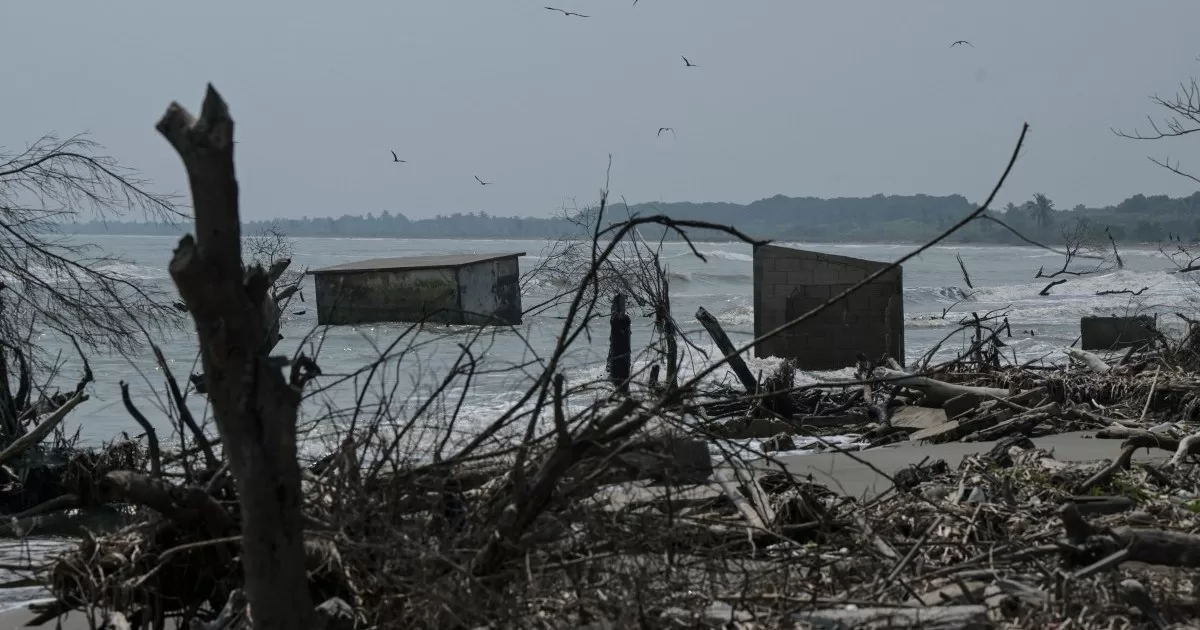Surging sea levels are creating “a rising tide of misery” that threaten the future of nearly a billion people that live in low-lying coastal areas, the UN chief has warned, as they become increasingly vulnerable to storm surges, coastal erosion and flooding.
Since the beginning of the 20th century, the global mean sea level has risen faster than in any prior century over at least the past 3,000 years.
NASA says that as global temperatures have risen about one degree Celsius (1.8F), sea levels have gone up 160 to 210 millimeters (six to eight inches) with about half of that amount occurring since 1993.
“Rising seas mean a rising tide of misery,” said Antonio Guterres, speaking at a summit that placed sea-level rise at the top of the international agenda at the UN General Assembly earlier this week.
Guterres warned of “communities swamped, freshwater contaminated, crops ruined, infrastructure damaged, biodiversity destroyed and economies decimated – with sectors such as fisheries, agriculture and tourism pummeled”.
According to the World Meteorological Organization, the average sea level globally reached a record high last year. The UN reported that the rate of increase over the last decade is more than twice the rate of sea level rise in the first decade of the satellite record, from 1993 to 2002.
“The primary cause of sea-level rise is human-induced climate change. Melting land ice and the expansion of seawater as it warms are the main drivers of rising waters around the world,” Ryan Hobert, associate vice president for climate and environment at the UN Foundation, told Al Jazeera.
“The ocean is actually one of our biggest allies in the fight against climate change. It absorbs excess heat that is released into the atmosphere. But the problem is that as water heats up, it expands, which scientists say is responsible for nearly half of the sea-level rise we’re seeing.”
‘Ocean is overflowing’
Last month, Guterres said “the ocean is overflowing” and it was “a crisis entirely of humanity’s making”.
The UN says one out of every 10 people on earth live close to the sea. It also pointed out that people living near the coast in countries including Bangladesh, China, India, the Netherlands and Pakistan “will be at risk and potentially suffer catastrophic flooding”.
Also at risk are cities like Bangkok, Buenos Aires, Lagos, London, Mumbai, New York and Shanghai.
Pacific islands face growing threats to their economic viability and even existence. Small islands with low-lying land areas are arguably facing the most critical threats. Sea-level rise and other climate effects are already forcing people in such Pacific Ocean nations as Fiji, Vanuatu and the Solomon Islands to relocate.
‘Curb greenhouse gas emissions’
According to a study cited by the IPCC, the Maldives, Tuvalu, the Marshall Islands, Nauru and Kiribati may become uninhabitable by 2100, creating 600,000 stateless climate refugees.
“The first and most important way to stop rising sea levels is to curb global greenhouse gas emissions,” Hobert added.
“For Small Island Developing states – especially low-lying islands in the Pacific like the Marshall Islands and Tuvalu – no issue is more pressing or consequential. Sea-level rise not only threatens to destroy their livelihoods and cultures, but their very existence on the map.
“We will need to invest in climate adaptation and resilience.”
Flooding has increased soil salinity, reducing crop yields and weakening trees. Infrastructure, such as roads and power lines have been washed away.
The UN has also warned that the effects of saltwater flooding can range from damage of coastal habitats, fish stocks, agricultural lands as well as infrastructure, and can impact the ability of coastal communities to sustain their livelihoods.
In addition, the world body says “flooding can contaminate fresh water supplies, promote waterborne diseases and lead to stress and mental health problems”.
Under-threat countries whose main source of income is tourism can also suffer via damage to beaches, resorts and coral reefs.
